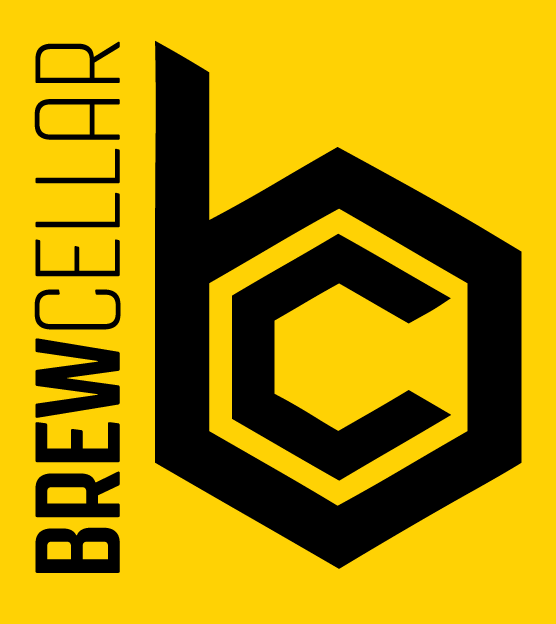Do you sell online?
We do not sell online. Our shopping list feature is for customers who would like to print out or email their list before visiting their local home brew specialty store.
At BREW Cellar we feel the most important part of our business is the individual home brew specialty stores all over the country that support our products, which is why we always direct customers to their local store.ÂÂ
Visit our “Store Locations” page to find your nearest BREW Cellar stockist.
How long to ferment?
A typical brew, fermented in the range of 21C-27C, may take 4 to 7 days to ferment. A warmer brew will ferment faster while a brew fermented with true lager yeast at low temperature (10C-15C) may take as long as 2 to 3 weeks! A fast fermenting brew will not necessarily produce the best tasting beer. It’s always best to ferment at the lower end of the recommended temperature range. Your brew has finished fermenting when the Specific Gravity (SG) readings are stable over a couple of days.
ÂÂ
Air-lock not bubbling?
This is the most common of problems. Many brewers assume the brew is not fermenting because the air-lock is not bubbling so, “Out she goesâ€Â.  Most likely, the brew is fermenting but as fermenters don’t always seal well, the air-lock does not bubble and the brewer assumes that the yeast is dead. A brew does not need to be in a perfectly sealed container to result in good beer. A number of commercial breweries today still ferment in open vats!
Before making the ultimate sacrifice and tipping it out, assess the situation.  Look for visual signs of fermentation such as frothing and a scum ring around the top of the brew, condensation on the inside of the lid, a build up of sediment in the bottom, a sample from the tap is frothy and cloudy and the SG is dropping from day to day.
ÂÂ
Frothing through the air-lock?
Sometimes, mainly in summertime, the ferment will be so active that froth comes out through the air-lock. There is no need for concern as, apart from a bit of a mess, this is actually a good thing! Plenty of frothing indicates that the yeast is strong and fermenting vigorously. Simply refill the air-lock and allow the yeast to carry on with fermenting the brew. Frothing over may be avoided by using a bigger fermenter, filling to a lower level for the first few days and topping up with water to the correct brew volume once the froth has subsided, starting the brew at cooler temperature.
ÂÂ
Mysterious high hydrometer readings?
While a hydrometer should be used to monitor the progression of fermentation, many new brewers have problems getting accurate readings. This problem is, in part, caused by the hydrometer having such small graduations. More commonly though, a false high reading will be made because CO2 gas, dissolved in the brew, releases forming bubbles which cling to the hydrometer. In turn, the bubbles cause the hydrometer to float higher in the sample giving a false high reading. To dislodge the bubbles tap or spin the hydrometer a couple of times. The lowest reading achievable is the most accurate one.
ÂÂ
Over-gassed or flat beer?
Over-gassed beer may be due to; bottling before the yeast has finished fermenting, adding too much priming sugar to the bottles, the level of infection is high enough to create excess gas.
Flat beer may be due to; not enough priming sugar, bottles not stored warm enough for the yeast to ferment the priming sugar, not allowing the bottles to condition long enough for secondary fermentation, not enough yeast carried over from the fermenter to the bottles to perform secondary fermentation, bottles not sealed properly.
ÂÂ
What beer can I make in the cold of Winter?
Not all brewers in Australia experience cold winters, but those who do might use a heating source such as a heat-pad or simply take a break from brewing until the weather warms up. For those without a heating source, the colder months present an opportunity for brewing true lager brews. Lager yeast will ferment quite happily in the temperature range of 10C-15C. Lager yeast, fermenting at the recommended temperature, tends to impart less fermentation flavours/aromas, producing clean tasting beer. Ask your Brew Cellar specialist store for advice on lager brews.
Can I make beer that’s okay for a diabetic?
Firstly, if diagnosed as diabetic, please consult your GP on this topic. A GP might suggest that beer with low residual carbohydrate can be consumed in small amounts. The home brewer can make a low carbohydrate beer using yeast capable of fermenting the brew more completely or adding an enzyme to the brew. Enzyme is available at your local Brew Cellar outlet. Enzyme breaks the higher level sugars and complex carbohydrates into simple sugars that may then be fermented by the yeast. Expect a low carbohydrate brew to ferment for longer than a normal brew and reach a FG of 1.000 or less. Home brewers are not able to stop the enzyme working so be sure to use PET bottles or kegs with a pressure relief valve to avoid shattering glass.
